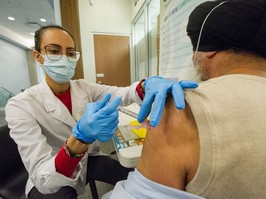long-term care homes that became overwhelmed with covid-19 infections in the early months of the pandemic seemed to follow a consistent pattern before reaching a tipping point, according to a new report. once “tipped”, it was difficult for homes to turn things around without outside help.some of that help came in the form of teams from local hospitals or, in some cases, the canadian military, which went into homes in ontario and quebec.among issues in some of the worst-hit homes were a lack of personal protective equipment, weak infection control practices and limited testing. those issues, and others, helped spread the virus among residents and staff, leading some homes to become overwhelmed, according to the report from the canadian patient safety institute titled reimagining care for older adults: next steps in covid-19 response in long-term care and retirement homes.chronic under resourcing, poorly designed buildings, insufficient infection control and limited medical presence also made residents of long-term care homes more vulnerable to covid-19, according to the study. but not all homes became overwhelmed and saw high death rates.the report, based on interviews with health-system leaders and family members, looks at what went wrong and, in some cases, what went right during the early months of the pandemic, with a view toward learning lessons and preventing similar outcomes during a second wave.doing so is crucial, said jennifer zelmer, president and ceo of the canadian patient safety institute.“we have to learn from what happened in the spring. we owe it to the people who are affected to learn and do what we can to reduce the risk of future outbreaks as we go forward.”since it began, the pandemic has disproportionately affected residents and staff of long-term care and other seniors’ homes in canada.the statistics are grim: about eight out of every 10 covid-19 deaths in canada were in long-term care, making canada’s death rate about double the oecd average; care-home residents were 13 times more likely to die from covid-19 than adults over 69 living in the community, according to recent research; and the bulk of ltc deaths were in ontario and quebec.ottawa saw high death rates at a handful of homes. those include carlingview manor, where more than 60 residents died. it no longer has an outbreak. at madonna care community, more than one-quarter of residents and two staff members died from covid-19.zelmer said the research is partly a response to requests from some officials who felt they may have just been lucky during the first months of the pandemic and are looking for guidelines about what to do if they face outbreaks in the coming months. the institute will also put virtual learning sessions and exchanges in place to help ltc homes learn from each other.the pandemic revealed longstanding vulnerabilities, including too few staff, multi-bed rooms and poorly designed hallways that promoted the spread of covid-19, poor infection prevention and training, and little medical presence in many homes that experienced outbreaks, according to the report.some of those issues will require long-term solutions. in ontario, the provincial government has vowed to rebuild outdated ltc homes, something that has long been promised with little progress.but other issues — including preparation — can be vastly improved ahead of a potential second wave, the report suggests.ltc home leaders told the patient safety institute that pandemic preparations were initially focused on hospitals, leaving homes on their own or, in some cases, increasing their vulnerability to outbreaks by transferring many alternative level of care patients from hospital beds to long-term care.ltc officials also complained about being talked down to by health-system leaders at the beginning of the pandemic, and being given messages that were unclear or contradictory about testing, the use of ppe and access to homes.the study also reported that ltc homes were often excluded from the sharing of ppe and infection control training early in the pandemic, and that reporting and testing was inconsistent.the report highlights preparation done by the kingston, frontenac, lennox and addington public health to include long-term care in early planning for the pandemic as well as providing yearly intensive education on infection prevention and outbreak management. the kingston area has just one case in long-term care during the early months of the pandemic.also included among the recommendations to reduce infections and deaths were early detection, which means testing asymptomatic as well as symptomatic residents, and isolation. that requires routine surveillance of staff, family caregivers and visitors to the homes.the report also suggests long-term care be part of region-wide planning from the beginning and that ltc homes have plans in place that include where they will turn for backup in case of an outbreak.
share story
share this story
'we have to learn from what happened:' research aims to improve long-term care
 3 minute read
3 minute read













